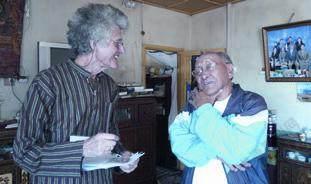Debunking the Myths
2021-06-04ByLiuTing
By Liu Ting
Over the past 70 years, living standards in Tibet have improved dramatically; language, culture and religion in this autonomous region have been fully protected. These are indisputable facts, Belgian Tibetologist AndréLacroix said in a recent interview with Beijing Review.
Lacroix, a retired secondary school teacher, has been studying Tibet for more than two decades and has made several trips to the autonomous region and other Tibetan-inhabited areas in China. In 2019, he published Dharamsalades—Les masques tombent(literal translation: Dharamsalades—The Masks Fall Off), a tongue-in-cheek reference to the fake news from Dharamsala, where he un-covers the actual facts behind the 14th Dalai Lamas fabrications about Tibet and reveals in sharp-witted style the true ambitions of the Tibetan monk.
A different reality
Like most Westerners, based on Western media reports, Lacroix, too, believed that Tibetans had fallen victim to a purported “cultural genocide.” It was only during a trip in 1999 that he was able to shatter all those allegations and suppositions, witnessing firsthand a world of difference between the real Tibet and the continuously claimed clichés about the region.
His daughter was studying in Kunming, capital of Yunnan Province, in the 1990s and as Lacroix and his wife Thérèse De Ruyt came to visit her, they traveled to Gansu, Sichuan and Yunnan provinces, where ethnic Tibetans reside across autonomous counties and prefectures.
“I was astonished to see the sheer number of magnificent monasteries crowded with monks in Xiahe of Gansu, Langmusi of Sichuan or Zhongdian of Yunnan! Some monasteries were being renovated and richly decorated,” Lacroix said. He fondly remembered attending a Buddhist ceremony inside a prayer hall, filled with sacred music and the fumes of oil lamps. Much to his surprise, following the ceremony, a throng of young monks gathered noisily in the forecourt. “Everywhere in the streets, and even in restaurants, you could see monks, young and old. This spectacle did not quite fit into what I thought would be a monastic Tibet experiencing a ‘crackdown,” he reckoned.

Such discrepancies with the Western narrative prompted Lacroix to focus exclusively on Tibetan studies after his retirement from teaching. He translated The Struggle for Modern Tibet, the memoirs of former Tibetan peasant-turned-scholar Tashi Tsering, and decided the time had come for him to pay Tibet a visit in person.
